proton PA-PB TOF momentum from (pi^-,p) reaction (run 292). All TOF parameters are adopted from K^+ result without any modification. Note that 4He events are NOT selected (just r<100 mm is imposed), and y and z hit positions on PB are limitted to be -500 ~ + 500 mm, again.

Hereafter, T0-PA TOF analysis is developed for (pi^-, X)/(K^-, X) reaction.
| ROW ID | Layer 1 order | Layer 2 order | Layer 1 - fit regin | Layer 2 fit region | Gaussian width for pi^- beam (psec) (run 291) | Gaussian width for K^- (run 290) |
|---|---|---|---|---|---|---|
| 1 | 3 | 2 | 0.051-0.174 | 0.051-0.149 | 80.08 | 44.31 |
| 2 | 3 | 3 | 0.056-0.249 | 0.036-0.186 | 79.37 | 46.29 |
| 3 | 3 | 3 | 0.056-0.249 | 0.036-0.199 | 93.97 | 66.40 |
| 4 | 3 | 3 | 0.066-0.224 | 0.031-0.249 | 82.22 | 49.08 |
| 5 | 3 | 3 | 0.056-0.199 | 0.036-0.249 | 80.48 | 48.30 |
Row-by-row 1/sqrt(phL*phR) VS T0time(2) - T0time(1) correlation after 1st stage slewing correction done above. A systematic tendency that T0 mean times are small if 1/sqrt(phL*phR) being small (i.e. for large pulse height), is clearly seen even after the 1st stage correction, for all counters. This must be removed by adding additional term to the correction function, which are locally determined, and locally effective by 50~100 psec.
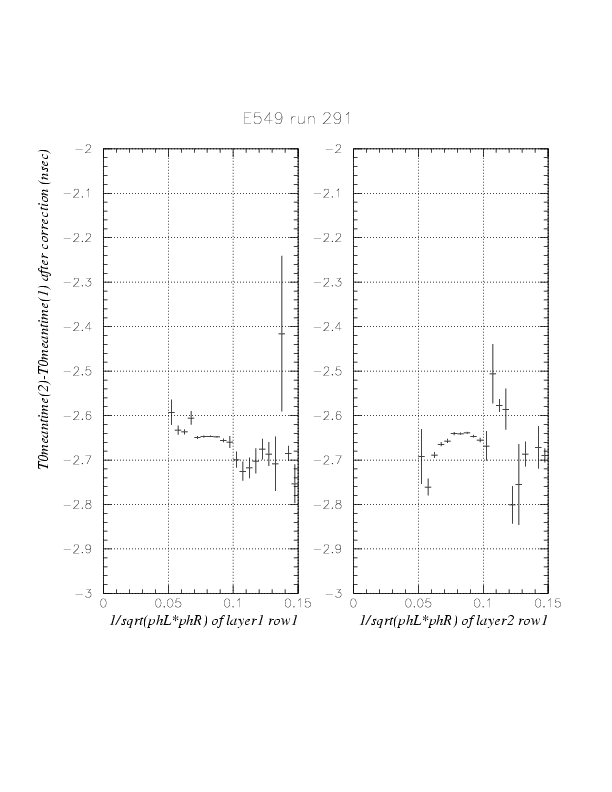


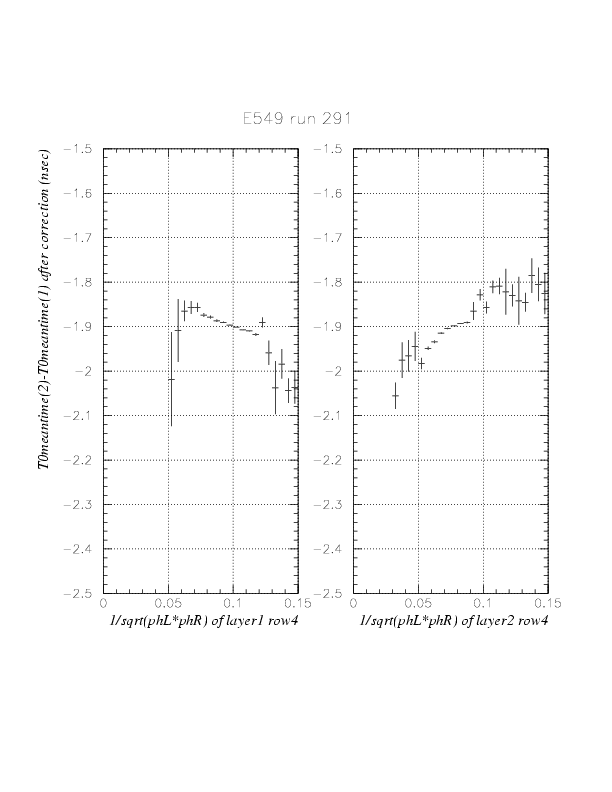
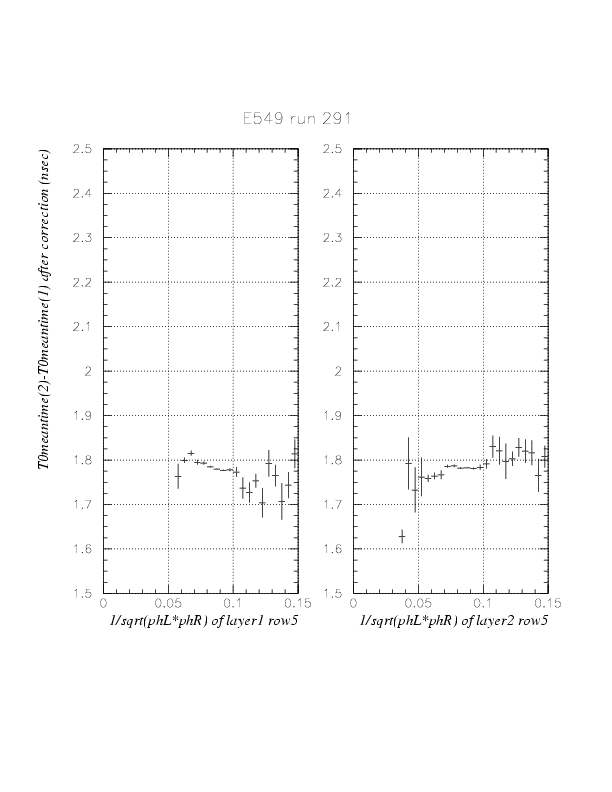
Second stage correction is activated only for 1/sqrt(phL*phR) < 0.1. The second stage correction function is prepared to correct the larger PH region, and defined as a parabola with its differential and value at 0.1 being 0 and 0 . The parabora is obtained by fitting the higher PH region for pi-beam events AFTER 1st stage global correction. The resulting behaviour of the time difference with respect to the 1/sqrt(phL*phR) is shown below, row-by-row. Now, we hardly see the deviation of the time difference from the constant.

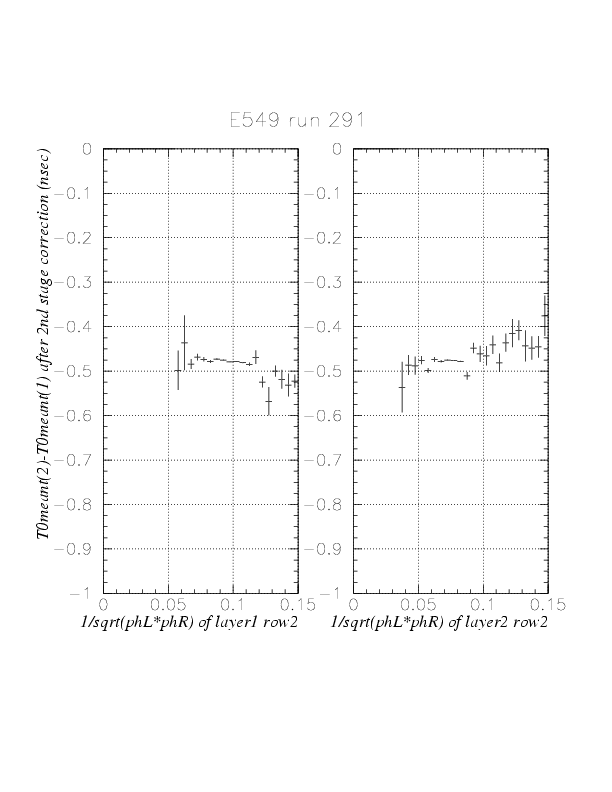
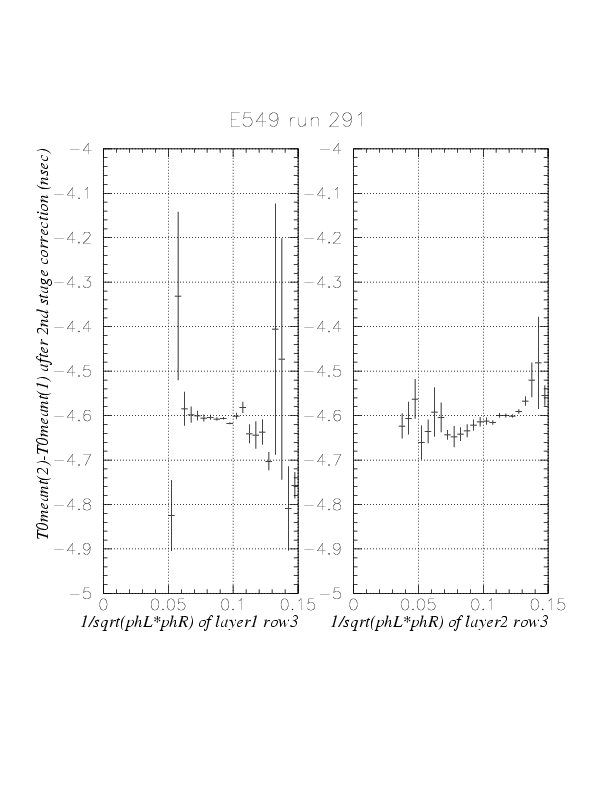
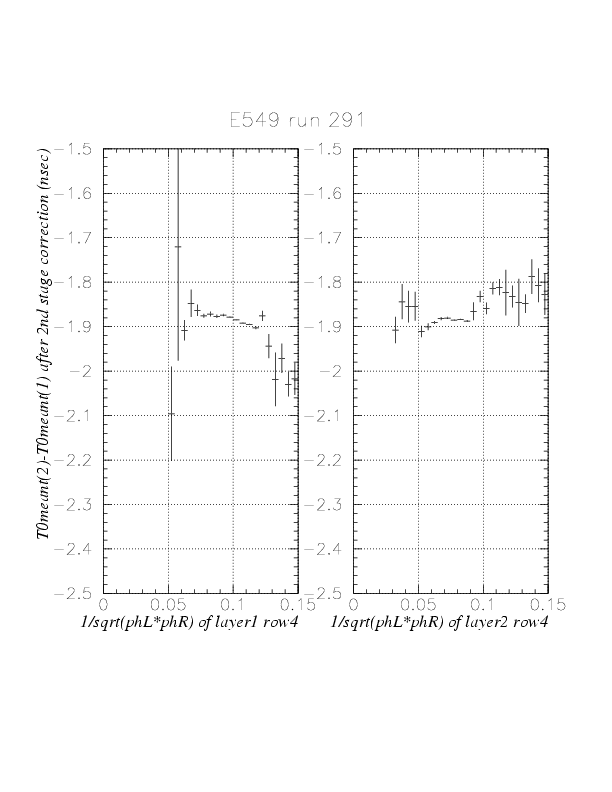

| ROW ID | Gaussian width for pi^- beam (psec) (run 291) | Gaussian width for K^- (run 290) |
|---|---|---|
| 1 | 79.66 | 44.23 |
| 2 | 78.49 | 45.76 |
| 3 | 93.45 | 58.15 |
| 4 | 81.24 | 49.18 |
| 5 | 80.26 | 48.15 |
Note that it is very difficult to see the improvement due to the 2nd stage correction by the width/mean of T0 2-1 time difference, because the effects kill each other for Kaon, for which two pulse heights are strongly correlated! But this correction would be meaningful for T0-PA/T0-NC analysis, to avoid expected deviation of the time origin and/or the aggravation of the resolution.
PA relative offsets had been tuned at run 136-141. Very unfortunately, substantiall deviation of the PA-PA relative offsets are detected, as is described a little bit later. Therefore, T0 relative offsets are tuned with respect to PA R arm row 1-4, for which large deviation of the offsets are not observed.
Time residual. Fast secondary particles with 1/beta 1~1.3 are selected at PA-PB. Top is with no selection on incident particles, whicle bottom-left/right are for 'fast'(i.e. continuously decelerated component from 650 MeV/c) and 'slow' (product of elastic/inelastic nuclear reaction and/or K^- decay) components, respectively. For slow component, calculated TOF of incident pion is insufficient, so that intense tail structure appears. Hereafter, we select fast component only, and check two-dimensional correlations with existing quantities.
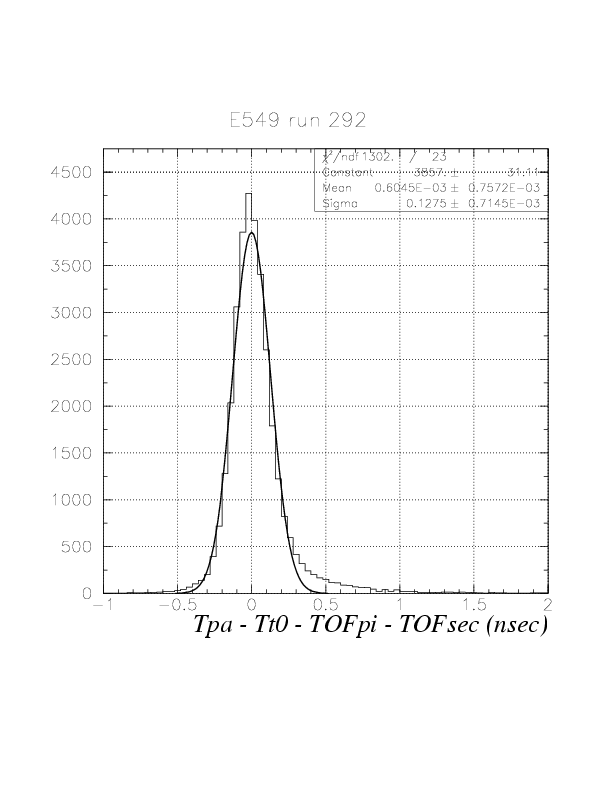

Time residual vs hit position on PA (top:y on PA without no PAID selection, bottom:z on PA with PAID 1-4. Both are for R arm.) Unfortunately, several*100 psec of relative time-walk has been detected. Part-by-part timing tune is indispensable.
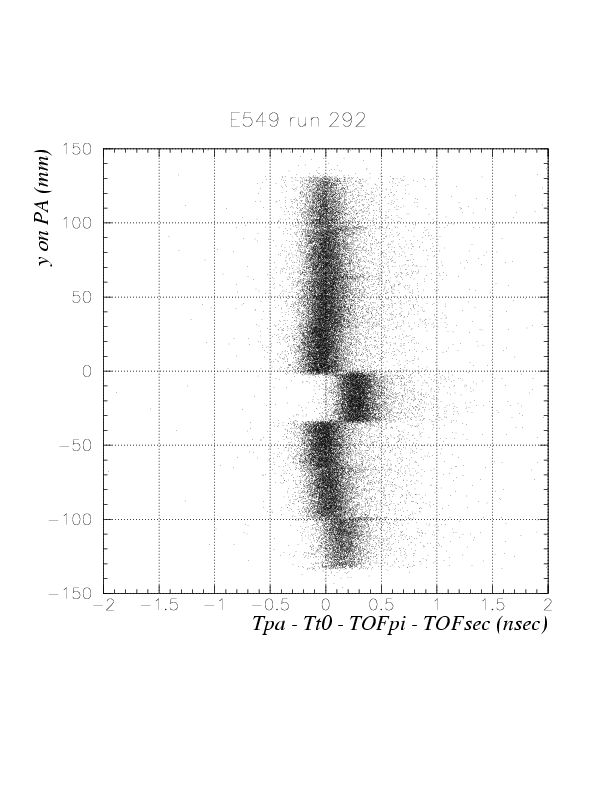
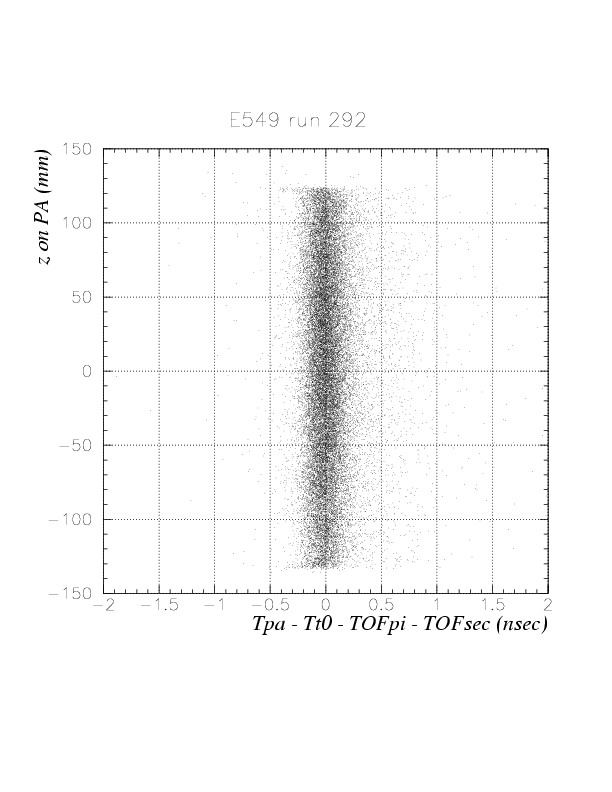
Time residual vs 1/sqrt(phL*phR) on PA. Significant structures are not found.
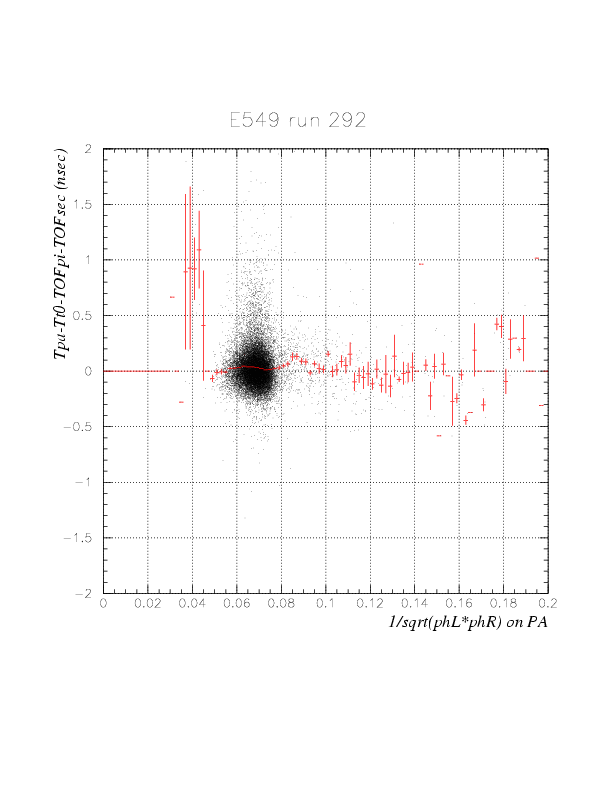
Time residual vs hit position on T0. Significant structures are not found.
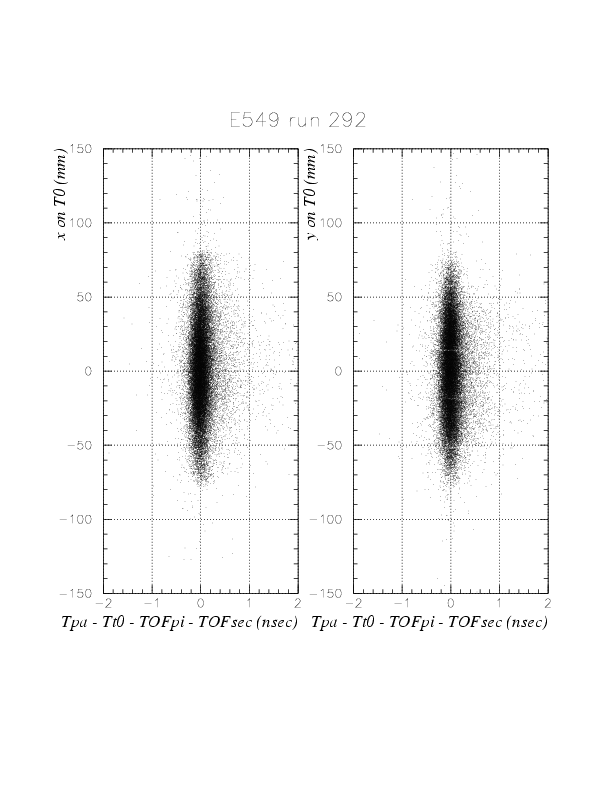
Time residual vs 1/sqrt(phL*phR) on T0. Significant structures are not found.

Time residual vs beta inverse of secondary particles. Now, no selection on beta inverse is applied to the time residual. Slow proton/pion component is clearly seen, for which secondary charged particle TOF is overestimated.
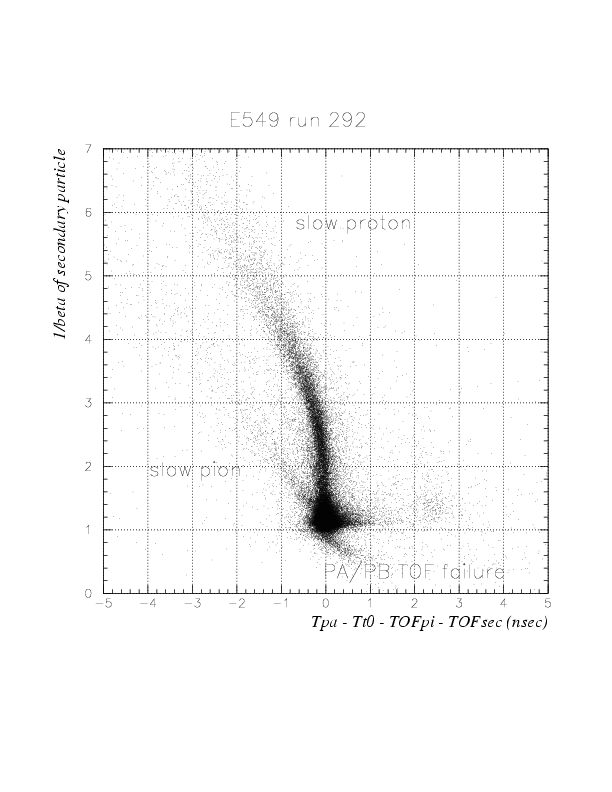
Time residual vs vertex/vca. Significant structures are not found.
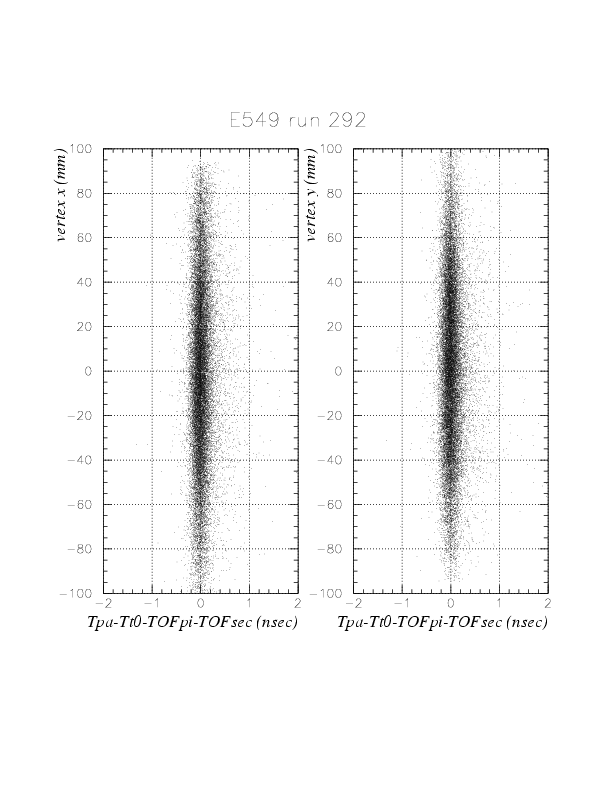

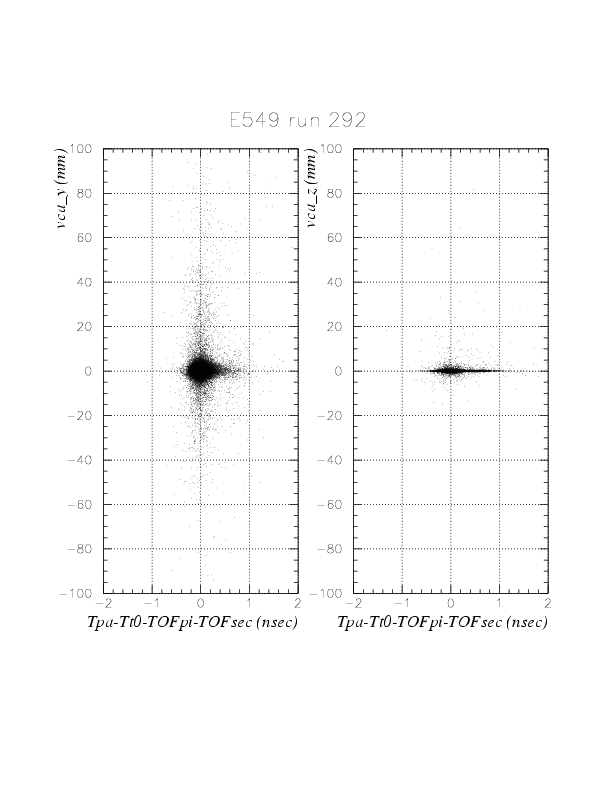
Time residual vs slew-corrected PA(top)/T0(bottom) meantime. Significant structures are not found.

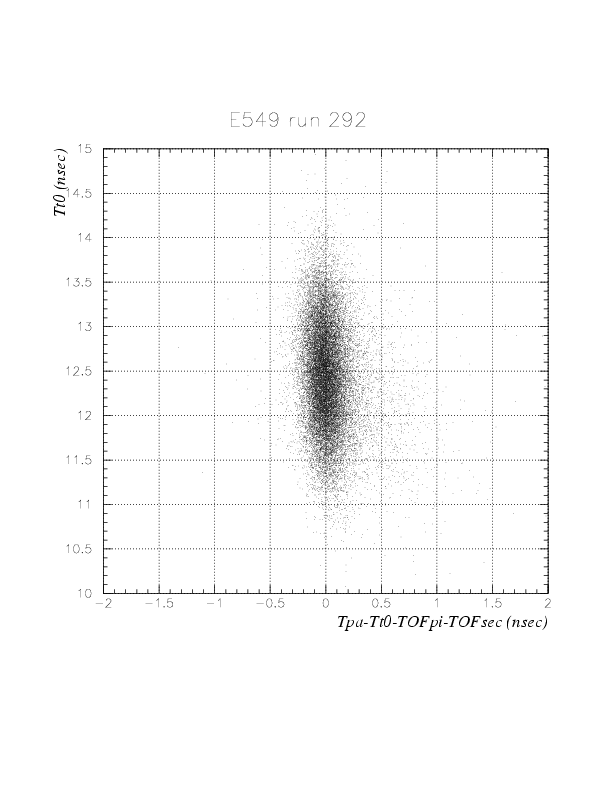
Time residual vs TOF of beam pi(top)/secondary particle(bottom). Significant structures are not found.
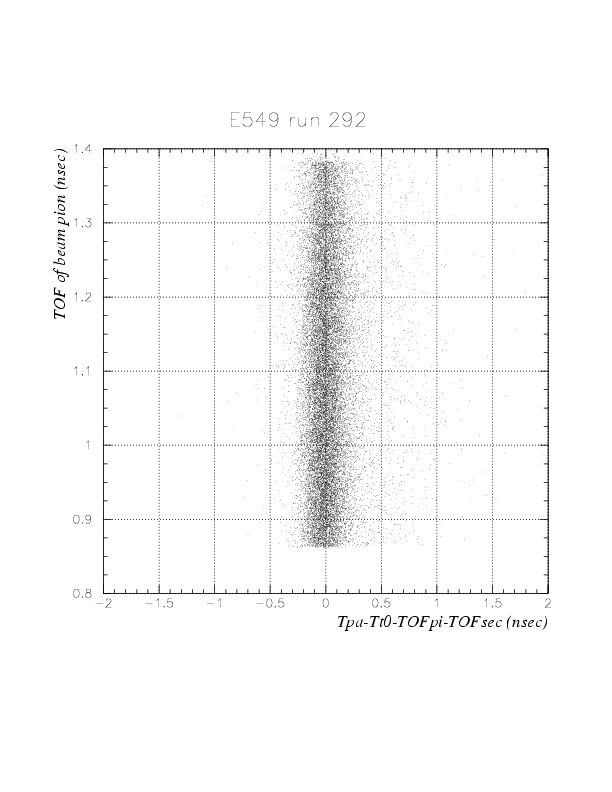

Resolution of time residual for fast particles(1/beta 1-1.3, top)/proton(1/beta 1.6-2.2 && proton PID function, bottom). Event selections commonly imposed are 1) fast pion of beam 2) PA R arm row 1~4 3) target fiducial volume cut.
